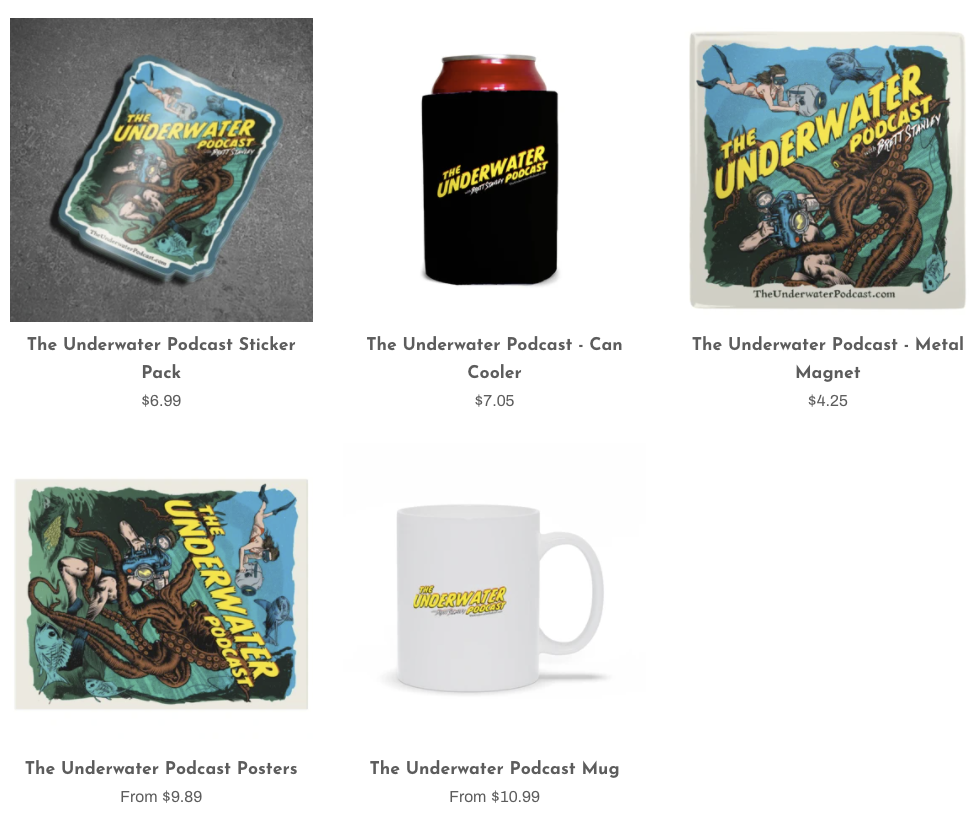Artist Barbara Cole – Underwater Fine Art Photography, Tintype images & Wet Collodion process
In episode #41, host Brett Stanley chats with experimental photographer Barbara Cole.
Barbara’s underwater work spans over 20 years and her approach to photography is akin to alchemy, where she pushes the boundaries of what can be done with the tools available – and even creating her own to accomplish the task. She’s had great success with vintage processing techniques such as Tin Type and Wet Collodion, and her images are more like paintings than they are photographs.
Follow this guest: Website, Instagram
Discuss the episode in our facebook group.
About Underwater Fine Art Photographer Barbara Cole
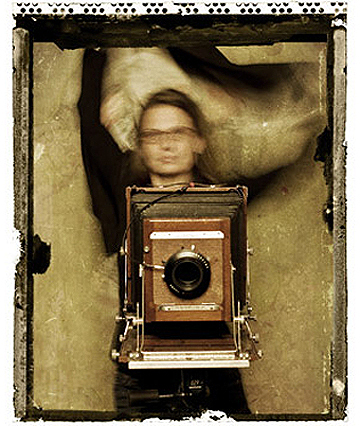
Barbara Cole’s artwork is extensively collected by both public and private institutions and has been exhibited worldwide in such venues as the Canadian embassies in Washington, D.C. and Tokyo, Japan. Throughout her career, Cole has worked internationally on commercial projects and large-scale art commissions including installations for the Breast Cancer Centre in Toronto’s Princess Margaret Hospital and for Trump Hollywood, Florida. Cole has won prestigious awards such as the Grand Prix at the Festival International de le Protographie de Mode in Cannes, France. In 2012 the acclaimed documentary series, Snapshot: The Art of Photography II, features an episode devoted exclusively to Cole’s photographic practice. Cole is currently on the advisory board of the Seneca College Photography Department in Toronto.
Cole is currently represented by Bau-Xi Photo in Toronto and Vancouver, Galerie de Bellefeuille in Montreal, Art Angels in Los Angeles and Miami, Holden Luntz Gallery in Palm Beach, and Nox Contemporary Art Space in Jaffa Port/Tel Aviv, Israel.
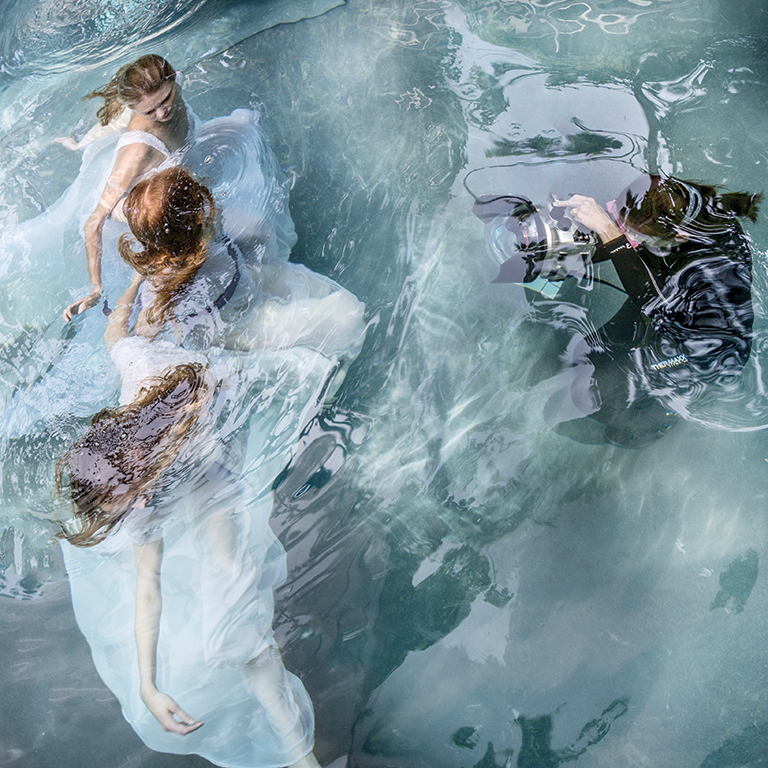
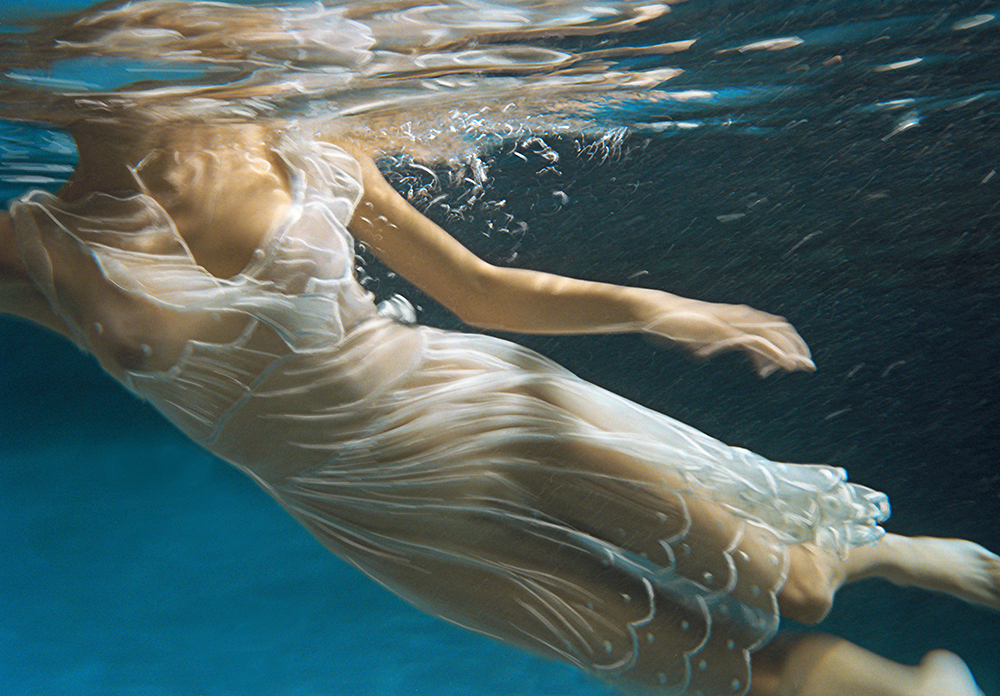
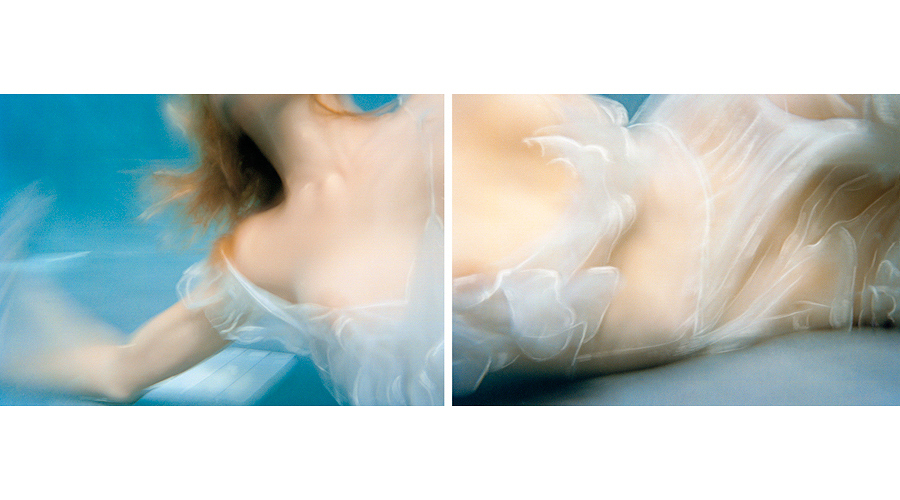
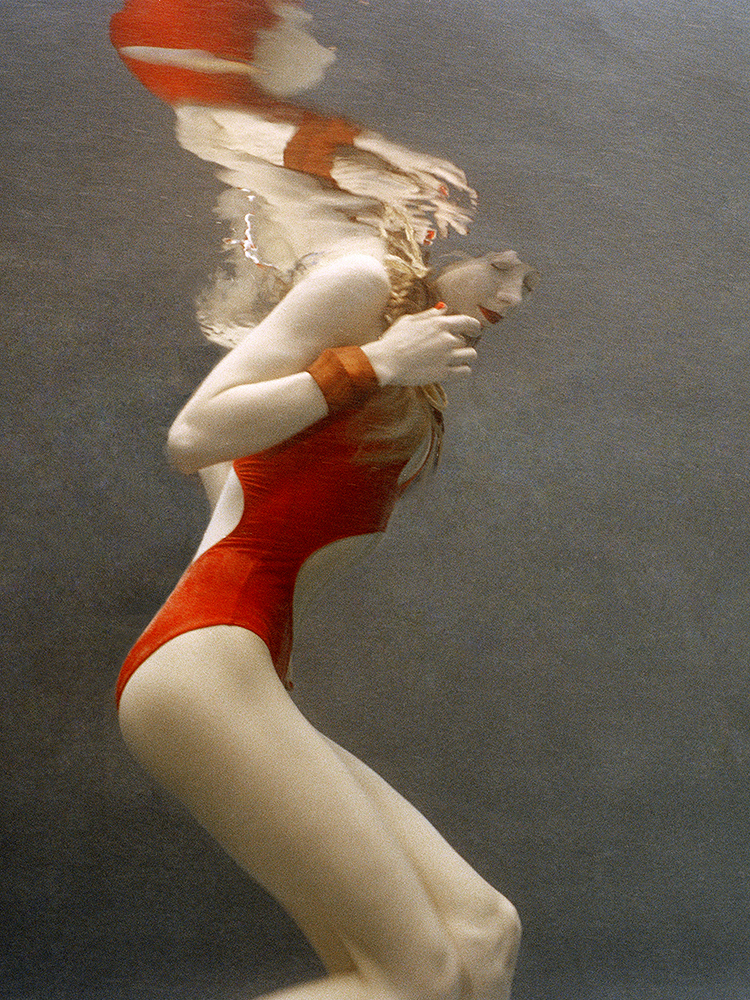
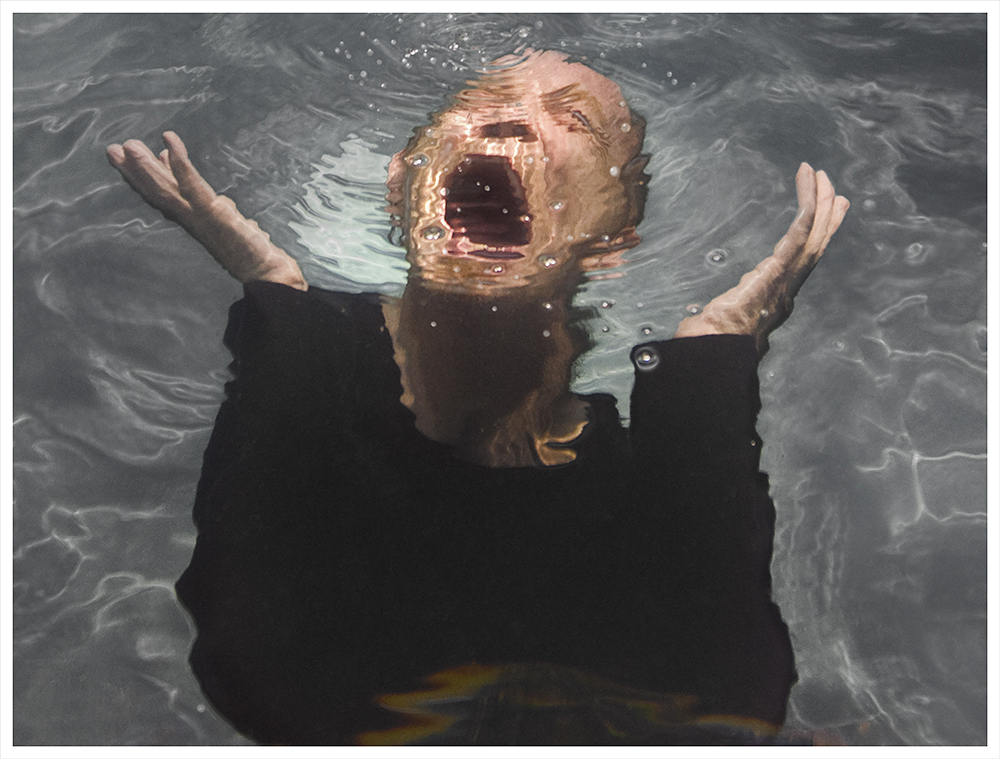
White Noise Selects Dec. 25, 07 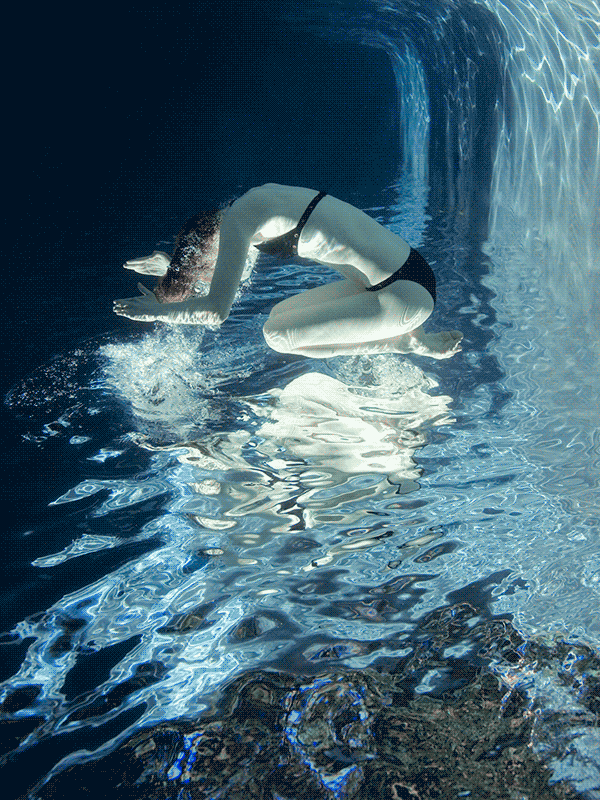
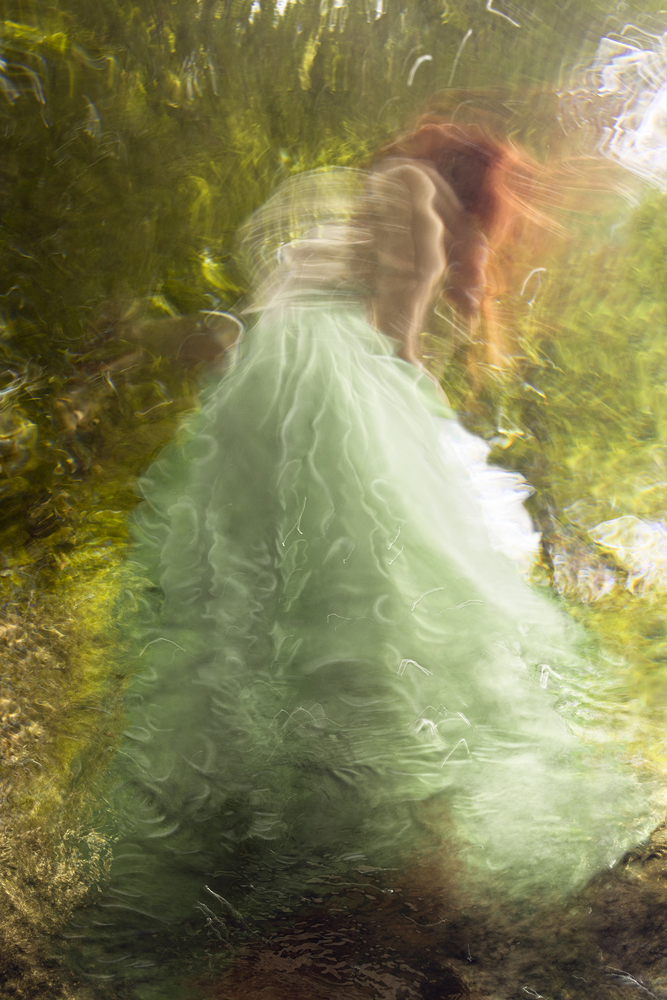
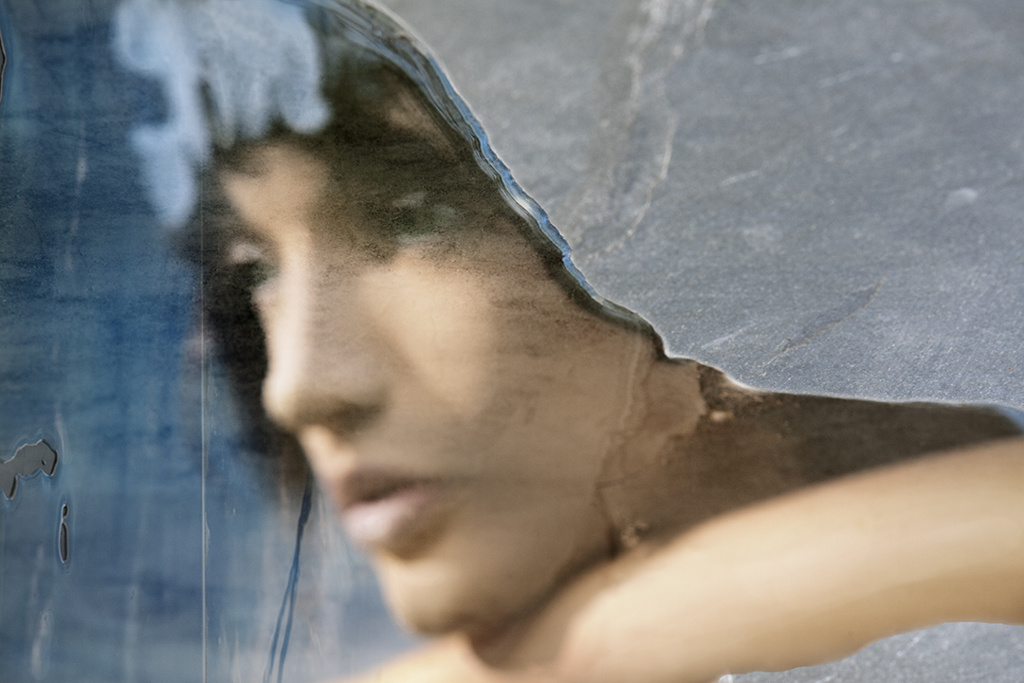
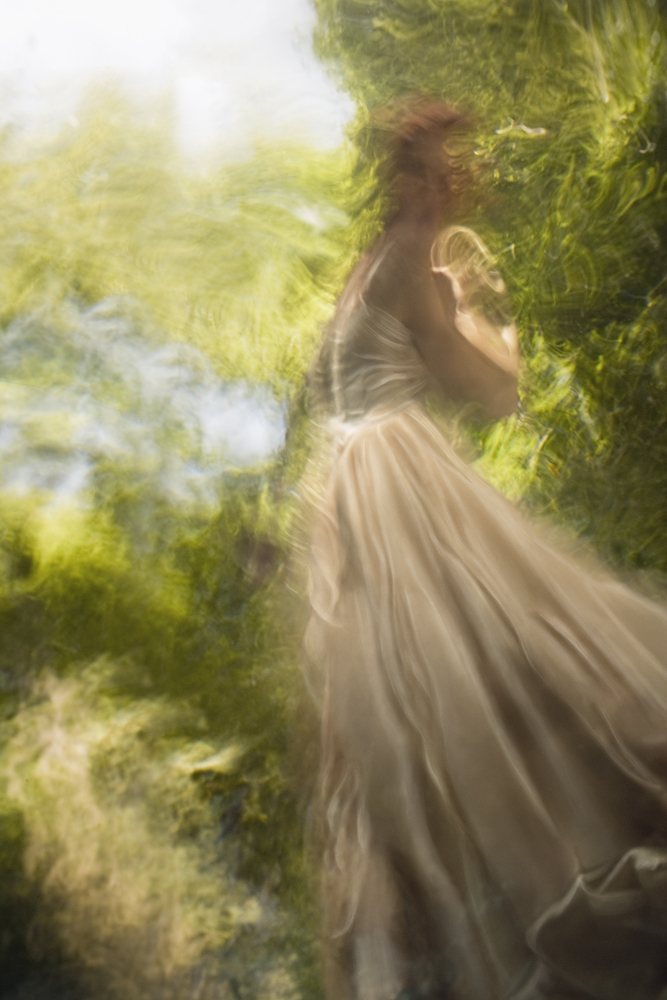
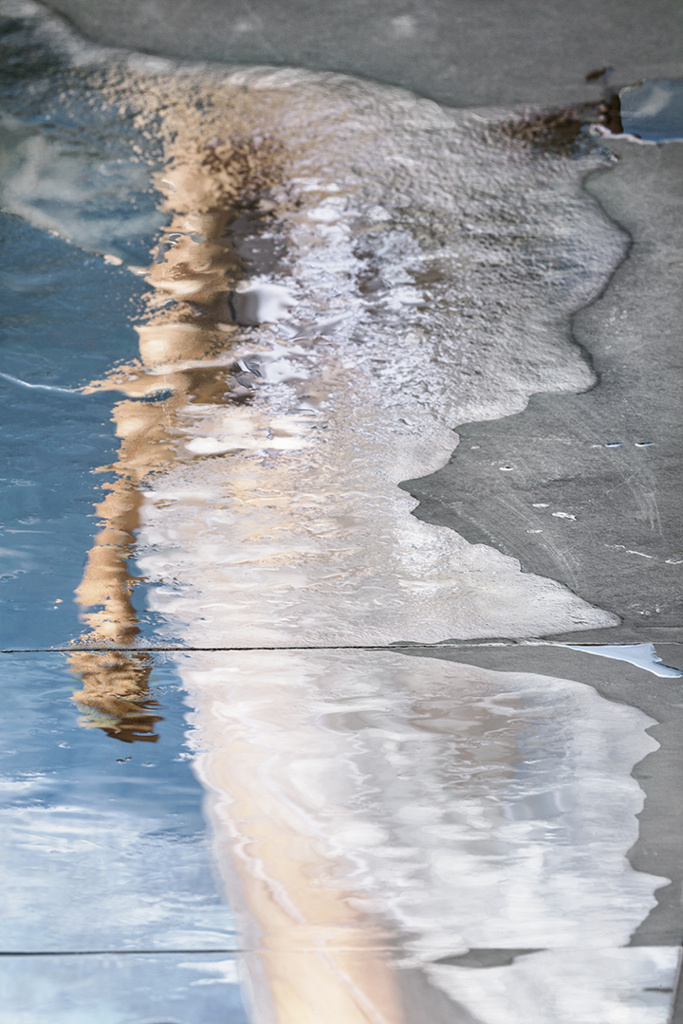
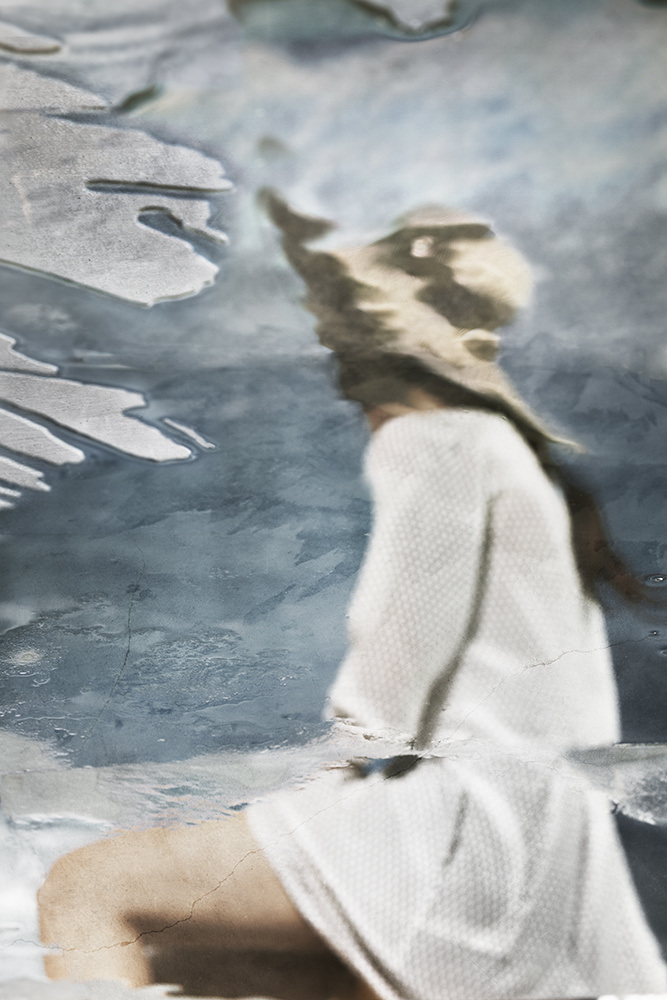
MEDITATIONS SERIES, 2014 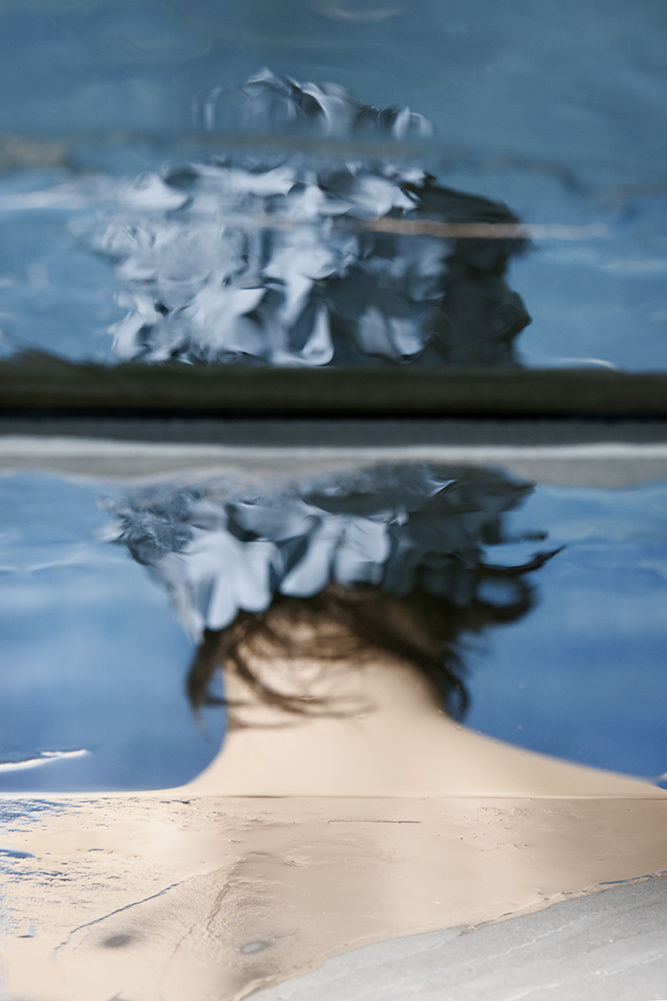
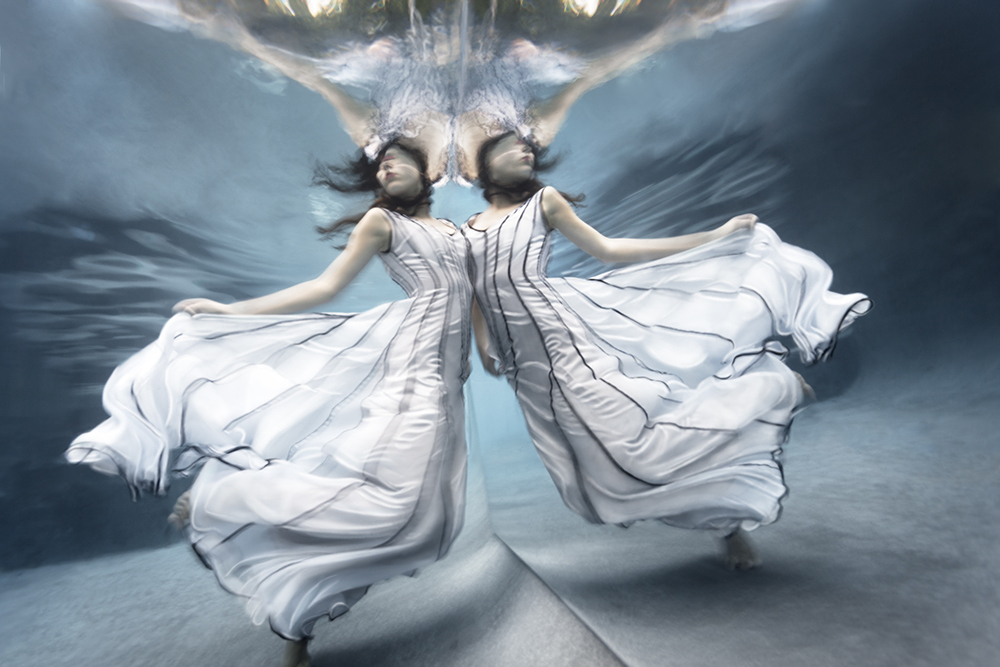
Podcast Transcript
Ep 41 – Barbara Cole
Brett Stanley: [00:00:00] Welcome back to the underwater podcast. And this week we’re talking experimental photography with artists, Barbara Cole. Barbara’s underwater work spans over 20 years and her approach to photography is akin to alchemy, where she pushes the boundaries of what can be done with the tools available and even creating our own to accomplish the task.
She’s had great success with vintage processing techniques, such as tintype and wet collodion. And her images are more like paintings than they are photographs. Okay. Let’s dive in.
Barbara welcome to the underwater podcast.
Barbara Cole: [00:00:31] Thanks Brett pleasure to be here.
Brett Stanley: [00:00:33] Now you’re in Toronto. Is that right?
Barbara Cole: [00:00:36] That’s right.
Brett Stanley: [00:00:37] Is it starting to warm up there or is it still bloody cold?
Barbara Cole: [00:00:40] It’s three degrees right now, but we had a warm weather on Monday for about an hour. We’re getting there. We’re getting there eventually.
Brett Stanley: [00:00:50] Yeah. So, so how does that affect you in terms of your creativity? Like having such a, you know, an off season
Barbara Cole: [00:00:57] Well, you know, my it’s really interesting because I used to, spend the off season retouching what I shot because a lot of my work is combining Other pictures. So it is quite a lovely editing is quite a lengthy process. But my assistant once said to me, maybe 10, 15 years ago, you know, Barb, you’ve got to get a one, two punch with that.
I started working in. A wet collodion, which is that tintype process from years gone by and it’s literally taken, you know, I never finished on time with that. So I start when my pool closes sometime in September and And then I I’m, I’m finishing about now, except this year. I’m not finishing. I have to go in September.
I have to go around again, but it’s, it’s really great. I think that it’s really great to, to be able to do, to have that change. You know, it makes things more stimulating and, and gets you you know, some new creativity, new juices flowing.
Brett Stanley: [00:01:59] is that what you find? Like, it’s kind of that that lack of being able to get in the water, it’s kind of fueling you for, when you do get back in the water, like you’re already energized to get back.
Barbara Cole: [00:02:09] Yeah. I mean, it gives, you know, it gives you time to really understand what you shot last year. And even, you know, so many times I thought I had the work, the series that I was working on. I thought I had it and it was done. And then sometimes, you know, over the time period between when I stopped shooting and when I got back in the water, I realized that I was close.
But I haven’t gotten there yet, and I will toss the entire show out and start again. But now I’ve got the nucleus of what it was that I was really intending to. Do, you know, what really inspired me? So it, I think it’s great to have that, that period of rest where your subconscious will kind of just start looking at your work.
It’s not fresh anymore. It’s not exciting because you’ve seen it. You’ve shot it. And that’s what it is. Then you start seeing it as a lay person would look at it if it was on the wall and you realize that, you know, maybe it’s not fully focused. So it does save you a bit to have that period of time to, to think and cool down and see if you’ve you’ve done a good job or, or you actually shot what you had in your mind’s eye.
Brett Stanley: [00:03:26] Yeah, I think that’s the thing like, cause I think if you, if you try to edit too close to when you shot it, you you’re too close to it. You’re too in it.
Barbara Cole: [00:03:34] Yeah,
Brett Stanley: [00:03:35] in that moment. I think
Barbara Cole: [00:03:37] it’s so interesting because you’re what you choose. W when I edit a show, usually they span two summers. When I edit a show after the first summer, it is entirely different than what ends up on the wall, on the gallery.
Brett Stanley: [00:03:51] because you’ve had that time and it just States and you look at it differently.
Barbara Cole: [00:03:55] Yeah. Yeah. You look at it differently and you go in just a slightly different direction, but it makes everything click, you know, it’s just a tiny tweak, sometimes just a tiny tweak. Sometimes it’s, it’s more than that, but usually it’s just. You came close and you were excited because you were hope, you know, happy you got it.
You got anything because that idea was like fleeting and hard to pin down. So you’re just deliriously happy that you think you got it, but then you look at it and it’s not quite right, but you go, okay, well, I’m glad I did that because now I can go to, The next level, which is, you know, just a tighter edit and, and going back out at it again with, from that point of view.
Brett Stanley: [00:04:39] So it’s almost like you kind of like, like almost prototyping, like you do it once and then think it either does work or it doesn’t, and then you learn from it and then you kind of kind of do it again, knowing what you’ve, what you’ve.
Barbara Cole: [00:04:50] Yeah. Yeah. And the thing is not to get discouraged because you put your heart and soul into it, you know, and every shoot you you’re really trying to. To hit the bullseye. And when you realize the whole summer has gone by, and you know, you missed the target, it can be, you know, deflating for sure. But over the years, I’ve just found that that’s just the process of creating,
Brett Stanley: [00:05:15] Yeah, that’s totally my kind of take on it as well. And there was an interesting chat, I mean, in a few kind of Facebook groups about underwater photography and, and a photographer was lamenting how, you know, yesterday they did a shoot and it made them want to quit. You know, and they kind of asked the question of what does everyone else do?
How do you kind of handle that? So what, what’s your take on that?
Barbara Cole: [00:05:36] Well, you know, I’ve never been a quick study. So for me, I expect that it’s going to be hard, but I don’t think about it in advance. I don’t look at the long game because usually I, I take on pretty ambitious projects and. If I looked at what would be involved ahead of time, I probably wouldn’t do it. So I know for myself that this was going to be tough and maybe it is tough and maybe that’s why it didn’t work out, but my mind just keeps clicking, you know, and saying, well, what if this, what if that, and now that I’ve. You know, set up the initial lighting or, I’ve seen the results of, you know, a couple of shoots then I’m no longer at that.
True beginning point I’m now just finessing and inching things one way or another. So maybe it wasn’t that lens I’m using. Maybe it’s not that type of angle that I want, or that light that I’m using, but at least I know I have used something and it hasn’t worked. So that narrows the field a bit.
Brett Stanley: [00:06:40] Yeah, I think that’s a beautiful way of looking at it is that you now know what not to do next time.
Barbara Cole: [00:06:44] Yeah. Yeah. And that happens a lot. I mean, really you think that you can preconceive something and it’s pretty amazing that you see it in the first place really. But when you, you know, when you finally shoot it, You know, it’s not surprising that it’s not right there. And you know, the other thing is, you know, I work with an assistant and.
Hair and makeup and models and wardrobe the whole, and everybody’s got an opinion and, and they love it. Or you can tell they love it, or they’re really trying to love it. And so you start to take the measure of the work just by certain reactions that you’re feeling too. So you have to block some of that out and say, I’m not going to be influenced because they don’t actually see the end game.
But on the other hand, if. They’re not feeling, you’re not feeling the vibe from men. You start to re-examine your approach as well.
Brett Stanley: [00:07:39] Right. So you’re kind of filtering those, those responses as to whether you want to take them on board or not.
Barbara Cole: [00:07:45] Yeah. Yeah. And you know, sometimes you do in your it and three shoots down the line, you’re back at your original problem. Starting again to fix it. So, I mean, yeah. I can see that person wanting to quit for sure. Oh, I have a funny story. When I was first starting out, you know, there are no manuals for this.
Type of work. So I was buying books for how to shoot fish and trying to understand the lighting of gray shark and a gray dress, that kind of thing. And it was, and I was, I was. Renting Nick and those cameras from Nikon, which are the, you know, single lens reflex, underwater housed, already cameras. And it was a film camera and everything was manual.
You had to set your focus by feet and you had to set your flash by feet and. Underwater things look closer anyways. So, you know, you’re, you’re just guessing and things kept coming out blurry for me. So I got this brilliant idea that I would tie a piece of string in different colors. So the yellow piece or the pink hot pink piece was two feet away.
And then there’d be a lime green and that would be like three feet away. And I get the model to hold it while I was on the other end. And then I could set things accurately and it was great. And it worked the first time fabulously. And then I did a shoot right after that. And my film came out really blurry.
And that was because I, I bought cotton string and it had shrunk. In the water. So then I changed to bathroom chain. It was like things you don’t realize, you know, things go wrong. You know, you do feel like quitting, cause you don’t understand what you’re up against. You know, you know, you’re an underwater photographer as well, you know?
You know, you get cold and you, your eyes, you know, those, their focus after a while. And you’re, you’re watching the model because of course she’s wearing, she’s not wearing a wetsuit and she’s going to be freezing. And is she intimidated? Can she, can she sink or is she going to float? You know, Is she struggling to make me happy, but really she should have come up for breath four hours ago, you know?
So there are all these other things and you don’t want to touch, usually you’re, you know, on land I’m around, you know, I look on my light meter and my flashbacks and what the power is and that sort of thing. But when you’re wet and you’re in the water, You can’t be that hands-on. So you’re not always in touch when things go wrong, you know, you, you haven’t seen the light meter.
You haven’t watched the clouds coming over when you went under water and you know, so it’s there, there’s all these frustrations, but you know, what can you do? We love it.
Brett Stanley: [00:10:32] exactly. And like my point of view. So I kind of embrace that sort of chaos. I kind of, my work is it lends itself to those things kind of going wrong. I think that I’ve re retroactively gone. I shoot underwater things can go terribly wrong. So let’s kind of just embrace that as our style. And so a lot of, a lot of my, my best shots are the ones that weren’t planned, you know flash didn’t go off or the clouds did come over or, you know, something like that.
Do you do that as well? Like are you kind of rolling with the punches?
Barbara Cole: [00:11:04] I do, but yeah, I do roll with the punches and sometimes you see something you like better, you know, because I shoot now digitally. So I’ll come up and look at the the card when it’s downloaded and try and remember what it was that I did that changed because I liked that particular shot. And sometimes I’ll just go with that.
I’ll say, you know, turn the flush down or let’s not use flash or like, we need a reflector or we need, you know, that kind of thing. But I have to say that most of the time I plan and when I plan, it goes a lot better from my point of view.
Brett Stanley: [00:11:37] Yeah. Are you pre visualizing as well? Like are you kind of sketching things out before you even get in the water?
Barbara Cole: [00:11:42] Yeah. I see it before I get in the water from my very first roll of film. It’s always been like that. And. I, I knew exactly what I wanted to do right from the moment I started. And so having been a commercial photographer for 30 years, you know, I knew what it entails to be a studio photographer. And I just used those tools underwater.
And you know, when I did trash and shoots or advertising shoots, You know, how buttoned down and planned do you have to be because there’s a client on board and they want to see what they drew. So, I just took that kind of discipline and it’s always been my way underwater. And so I would say, this is what I want it to look like, how am I going to get there?
And I’d start with that. And usually it was pretty close.
Brett Stanley: [00:12:36] Okay, that’s good. Because a lot of the times, you know, you’re like, I’ll try and sketch some things sometimes, but generally I’ll end up so far away from that original sketch that it doesn’t even, it’s not even worth looking at,
Barbara Cole: [00:12:46] I do, you know, you’re asking me what I did in my off season. And partly I do a lot of that during the winter and I’ll start. Designing the shoe one way and then be totally amazed that when it was time to shoot, I had completely pivoted to another idea, you know, without even knowing I was doing it, you know, I would draw out certain look and a certain color palette and, and then it would be almost the opposite by the time I’d finished flushing out 10 or 12 pictures.
Cause I, I got closer and closer. It was. Not quite right. What I was thinking now.
Brett Stanley: [00:13:25] it’s interesting that, that kind of mindset where you, cause you know, you’re, you’re saying that that what you were thinking you wanted was wrong, but yeah.
Barbara Cole: [00:13:34] I was thinking I wanted, wasn’t actually what I wanted, you know, it was a preconceived idea, but once I started getting into the idea and the way I would you know do that idea. It became more. What I had in mind, once I started laying down the technical aspect of, of what I was shooting, I realized, of course, this isn’t the way you describe it, in words, you know, so the words would get messed up.
The words would mess up my direction and my thinking, but it was when I actually thought through how I was going to create the shot that it started to clarify for me,
Brett Stanley: [00:14:13] That’s a
Barbara Cole: [00:14:13] No, when I use the tools in my mind instead of pen and paper.
Brett Stanley: [00:14:17] yeah, because the, the, the, the translation from the brain to the pen and paper, there was like something lost in that translation.
Barbara Cole: [00:14:24] Yeah. It was like, and I’ve always struggled with words. It’s very hard sometimes for me to focus on saying exactly what I want to say, but if I can do it. Then I get it, you know, if I’m, I’m very hands-on and I’ll, and I’ll also do quite a number of tests before I begin working on a project. I don’t just dive in, excuse the metaphor.
I actually, you know, stand in the shallow end for quite a bit.
Brett Stanley: [00:14:50] so, and is that like different, different shoot days or are you kind of just testing everything before you
Barbara Cole: [00:14:55] No. And before, before I begin, I do a few. Pretty serious tests. Were I go at it from what I think I need, if that doesn’t look right, I change it up until I get closer and closer and closer, then I’ll go to sleep and I’ll look at the work and I’ll have a week between tests and it will start to get clearer.
I’ll start to be able to communicate what I want to do so I can find the answer.
Brett Stanley: [00:15:24] So, yeah, so you’re really searching. You’re really preparing and you’re kind of putting in the work to get what you want.
Barbara Cole: [00:15:30] Yeah, otherwise, what’s the point.
Brett Stanley: [00:15:33] Yeah. I mean, it’s interesting. I come at it from a totally other end of things where, you know, like for me, I, I, I kind of see an image in my head and I kind of prepare, but then on the day, and I think, and I can’t work out if it’s a case of may, like you said, like not knowing how to explain what I want, or if it’s just me being really happy with what I got.
At the end, if you know what I mean, rather than, rather than sort of going in with this really determined, I’m going to get this. I kind of go in with a, Ooh, I hope I get this. And then I’m just going to be happy with what I get out there.
Barbara Cole: [00:16:08] Well, I could see that working if you’re doing a one-off, but I’m doing a series and I work in series. And so I have to be able to say the same thing over and over. In an interesting way. So I have to be in control of my tools and my, what I’m doing. Otherwise, I wouldn’t be able to do it in that form, you know, in a multiple picture form.
Brett Stanley: [00:16:35] So you kind of need like a workflow and a formula for
Barbara Cole: [00:16:38] Yeah. And once I get going, I’m just happy as a clam. It’s that first period is, you know, it’s hell on earth. It was like, why can’t I get this? I don’t know what I’m doing wrong.
Brett Stanley: [00:16:49] that must be really awesome though, that when you get it and then, then you know how to repeat it and slightly change it each time and kind of get that series.
Barbara Cole: [00:16:58] Yeah. Yeah. And you know, everybody, I have two daughters and they’re both married and a husband and we’re sitting at the table about two months ago. I was working on a series, not underwater this, this winter. And it’s been kind of lurking in the background for many years and I just had to do it finally and finish it and, you know, Get get move on.
And it was really perplexing. I didn’t quite know what it was like. This was the frustration is that I didn’t know what I had to do. I just kept trying different things because I wasn’t sure I didn’t have that preconceived vision. And I went a long way down the road with something that wasn’t right.
Right. And finally, and I was miserable for months. And then finally at the dinner table, everyone’s always talking about their week and how great this was and how terrible that was, whatever. And I just pipe up. I’ve, you know, I’ve just solved a really big problem and they look up at me like, what problem can you have mom?
You’re a photographer. You’re an artist. I’m so sorry. I said that because really it was a big problem and I feel so much happier now, but I can’t really tell you.
Brett Stanley: [00:18:07] can’t explain it. I’ll show you after I’ve done it. Yeah.
Barbara Cole: [00:18:10] Yeah. But I just wanted you to know that I feel better.
Brett Stanley: [00:18:13] Cause I mean, it must feel like a blockage, right? Like you feel like you’re kind of like everything is held back by this one thing that you can’t solve.
Barbara Cole: [00:18:20] Yeah. And it was more than a blockage. I couldn’t see why, what I was doing was bad. It really was bad at interfered with the picture and it raised more questions than it answered. So it wasn’t the tool that I needed to work with. But there was enough. That was interesting about it. That whenever I asked somebody they go, I don’t know.
Yeah. Keep going. Yeah. And that’s how I was until finally I realized I did know finally, but that’s, that’s not the usual. It happens, you know, every three sh three series where I’ll just think, wow, I have a great idea. And the idea wasn’t really there.
Brett Stanley: [00:19:00] Right.
Barbara Cole: [00:19:01] So it sneaks up on you.
Brett Stanley: [00:19:02] I mean, you’ve done such amazing series. Is there a series that you’ve done that you’ve used that you feel is the most important to you or the most the one that you do you feel the most proud of?
Barbara Cole: [00:19:13] Yes. I, it was my very first underwater shoot or show I had this brainstorm. It happens sometimes during series where I just get this overwhelming urge to do a certain picture. And and it works out right from the beginning. And that was this. It was called underworld. The series and it went to the Canadian embassy in Tokyo and in Washington.
And it was super successful from the very first frame of the very first piece of film. And it still sells today and it’s, and it was simply. So simply made, I would speak to modeling agencies and because it’s underwater and they can’t, the models couldn’t use it for their portfolio, per se, not the way I was shooting.
I cut off their heads know and put them in clothes. That was of my choice that wasn’t particularly stylish. So the agency said, we’ll send you the new girls and, and it invariably it I’d have to pick them up at the subway station cause they were 16 and. My house is hard to walk to. And then I, we get to the water and then they tell me they do know how to swim, but they don’t put their face in the water.
I was like, I knew it. I knew it. And then I ha I wear are used to wear a lot of. Twenties clothes lace and things like that. And I use that as the clothing, so she just changed into my clothing and I went and put on my bathing suit and bathing cap. I didn’t even know about weight belts. I took some weights, like, you know, pumping our own weights and I put it across yeah.
Dumbbells and I put them across my stomach and that’s how I kept myself down. And then I shoot film and every 36 frames, I get a dry off and put on, put in a new face. Roll of film and then wait three days for the contact sheets to see, you know, how it turns out and no assistant, no anything just me, my camera and some lights and this, and the model, whoever they would give me.
And some of the models were fantastic and others said they couldn’t swim. And even though they had said, I’m sure you’ve had that too. Oh, I, I really want to work with you. Yeah. I can swim like a fish, but they can’t. So but I was desperate and I’d say, Oh yeah, yes, you can. This is how we’re going to do it.
And and it was very intimate to, you know, to two women talking to each other, no crowd, no pressure, no, none of that. And it was just pure joy. So that started me off. And I also decided to do this show because my shows go on forever, you know, and I’m working on something. It goes on for a very long period of time.
And I thought. Well, it’s Canada. And so I’ll work. I’ll work until September, maybe, and then I have to be done. So that was another reason why I decided to do it. I got the idea of shooting underwater because 25 years earlier, when I was working at a newspaper as a photographer, fashion photographer, I did this shoot under water.
I had to use a friend’s house friend’s mother’s house and it was so inconveniencing for them, with the models, dripping, wet all over their floors and that sort of thing. But I, I just kind of put it in the back of my mind and said, well, this would be fun, but only if you have your own pool, like you can’t do this in someone else’s house.
And then lo and behold, I had my own pool for two years and didn’t even think of it. So God, in the water with this show got it started. And of course, because it was my own pool. I didn’t stop in September or October or November. There are pictures of me walking into the pool with snow, big things of snow all around me while I’m, you know, in my flip-flops getting in the water, the water was working enough.
So.
Brett Stanley: [00:22:58] hated.
Barbara Cole: [00:22:58] It was heated. Yes, for sure. And I never stopped after that. So that was like about 23 years ago and I never stopped. So it was the whole idea of doing this underwater shoot. So I’d be finished in time was a non-starter because I never stopped. So, and every year I just, you know, by the time. It’s warm.
I’ve got to do it again, but I’m glad I have the breaks. You know, so underworld was the first show and that went around to the embassies and that was fantastic. And then the other show is the one I’m doing now, which, because of COVID I turned to flowers and I had just started it before COVID and it was just luck that that was the next show that was coming up for me.
It’s called appearances and it opens actually. In two weeks and it’s gotten incredible results. Like people think, because I treated these flowers, they’re individual flowers and they treated them like they were my best friends. And I began to see them as people with names and personalities, and one was like more elderly flower woman.
And another one was, you know, a gawky red headed, freckle faced. Teenager. And, and I just kept going at those flowers until I felt I discovered their personalities and that was really fun. And it’s, they’re very, they feel like oil paintings and they’re very substantial, you know, they’re large and rich in color and a totally different direction.
So I’m very proud. You know, the other ones are takes on the figure and this is no figure at all. So
Brett Stanley: [00:24:41] So saying that you kind of like projecting these personalities onto these under these flowers. And obviously I haven’t seen the work yet, but are you, does that mean you’re shooting them? In different ways that you would to kind of capture that personality
Barbara Cole: [00:24:54] Yes.
Brett Stanley: [00:24:54] much time with them, you kind of ended up
Barbara Cole: [00:24:56] Wow. So it’s, it’s a bit of using your imagination. It’s like when I, I don’t know if you shoot fashion, but when you shoot fashion, when I do anyways if I’m not feeling the dress, I can’t shoot, I can’t do it. I can’t do a good job there. That dress has to become, you know, UN. A real object, a real person for me, where I feel I’ve done it, justice, you know, the, this dress needs to be shot in this way to enhance its beautiful ruffle or it’s biased cut, or so I go add it and add it until I feel like I’ve I’ve I’ve got it.
And same with the flowers. I did think of them as people. I did think of them as I’ve always done that. Like Brett I’m I anthropo, anthropomorphize. What is that
Brett Stanley: [00:25:45] Yeah. Anthropomorphize.
Barbara Cole: [00:25:47] after anthropomorphize things like crazy. And when I was a kid I used to sleep with Teddy bears, lots of dolls and Teddy bears in my bed.
There would be rows of them, like maybe six rows up from my feet to my shoulders. And then every night the row would rotate and one at my feet would come up to the. Breathing space area. And and every one of them had a name and I do, I’ve just done that all my life. And now I’m 68 and I’m still, you know, making new best friends with inanimate objects.
So it’s kind of weird, but when I realized I was doing that, it made me remind, remember the Teddy bear thing. And actually I did it until I got this really large, lucky green stamp doll, which was. Like kid’s size and it was stiff plastic with the fingers that were all bent out. Like they’re pointing at things.
I tried to put her in bed with me and she was going to poke my eye out. So that whole thing I just said, I was 15 at the time.
Brett Stanley: [00:26:47] time to move on. Yeah.
Barbara Cole: [00:26:49] Yeah, I know. I have a hard time letting go.
Brett Stanley: [00:26:51] But I mean, it’s great that you, that you know, that you do that and you, you have connected with that. You know, I think a lot of people and artists don’t know why they do things where I feel like you, you kind of have a good handle on. On why you need to feel a connection to your subject, whether it’s, whether it’s living or inanimate.
Barbara Cole: [00:27:08] Well, I’ve done it. I’ve been an artist for over 30 years now, and it’s just in the beginning. You. It’s very hard to call yourself an artist. You, you don’t feel like you really are. You’re just making pictures. But over the years, you know, having gone through the hard job of creating art on a consistent, consistent basis, you, you know, you kind of take things, not more seriously, but you give yourself credit for things, you know, it’s like, you just feel like.
You no longer say it’s just luck because you know, a lot more went into it. And so a lot of times, I don’t know, for example, that Teddy bear story, for example, it comes to after I want still to shoot another series called the Toronto series. It was just, for some reason out of the blue, I was an advertising photographer and I just stopped and I.
My, my rep, my artist’s rep couldn’t find me. I wouldn’t answer her calls. And she ended up calling people to find me because I got wrapped up in shooting in and around Toronto. And I had no idea. Yeah. Y you know, is going out to these strange locations and shooting them. And I was working on another show at the time, and I brought the summer’s work of what I had shot into the gallery.
And they said they love it. And what’s it about? And I thought rough don’t know it just happened, but I had to write it up artist’s statement. As I wrote it, I started to cry because I realized it’s funny, the way your mind works. My grandmother started the series. My daughter had to interview her. She was.
Six at the time she had to, had to interview her for school. And I had always really loved this particular grandmother. And I had been too afraid to ask her for. A session portrait session. So after I did the video taping for my daughter’s thing the next morning I just got up the nerve and I packed my stuff, my gear and put it in my car and I shot her and it was wonderful.
And then from there I went to the. Fairgrounds that I used to go with my parents and I went to the neighborhood that I used to, that I once grew up in. And I kind of went all over the city of Toronto retracing, these things. And in September, the last picture is shot was my I got a call from, I hadn’t checked my answering machine and I had many calls, which is never a good sign from people who don’t usually call you.
And my grandmother had passed away. And I stopped just stopped without even thinking about it. Just stop taking pictures. We, you know, did the funeral. And then I picked up with my life and then the gallery asked me to write about it. And I realized what happened was I was retracing my childhood.
Without really understanding it because I was working on a show of you know, just beautiful, ruins that I found in Europe. And this was something that just came up suddenly. I did it for three months. Couldn’t tell you why. I thought they were just snapshots, but I couldn’t tell you why I couldn’t stuff either.
I just had to keep going. And then one day it ended. And in April, my gallery said, you know, I think you should read NARKN statement about this. It took six months for me to figure that out. That that was the you know, the underlying reason.
Brett Stanley: [00:30:35] See, that sort of thing fascinates me because I don’t consider myself an artist. I consider myself someone who creates images, you know, like I don’t, and the reason I don’t consider myself an artist is because of kind of everything you just said, you know, that, that feeling in your own work and, and putting yourself into it and all that sort of stuff and, and kind of.
Even not knowing what your work is about until you kind of spend, you know, six months trying to work it out yourself. I think that’s really interesting and fascinating.
Barbara Cole: [00:31:05] I, I found it really shocking that I didn’t know that my, my mind wouldn’t allow me to go there for awhile.
Brett Stanley: [00:31:12] but
Barbara Cole: [00:31:13] It’s fascinating how that
Brett Stanley: [00:31:15] last to know, right?
Yeah. I think. It’s such a beautiful way of making sense of the world as well is, is, is doing it visually this way.
Barbara Cole: [00:31:24] Yes. I seriously believe that being a photographer has saved my life many times. I, you know, I can, I just get so caught up in it that I don’t register. What’s really going on. If I’m in crisis, I will take a picture. No, that’s why I’ve been. So I’ve just been, so I’m occupied with project. I’ve done like three projects in this past six months period, because it’s COVID and obviously I’m freaking out, but because I’m taking pictures, I’m okay.
It’s just the medium. If it was, if I had to write a book, I wouldn’t be okay, but because I have this form that gets me totally outside of my own head and world. It’s it’s just my savior.
Brett Stanley: [00:32:09] Yeah. I mean, let’s talk about your, your kind of visual style as well. I mean, I’m, I’m, I’m looking at the Toronto places, images and, you know, and, and knowing that this was shot in the nineties, I guess. Um, Yeah, so it’s all film and the styling of it is so painterly. Like it, it, I would assume these were paintings.
Barbara Cole: [00:32:28] Well, that’s my signature. I. I love photojournalism. I have to say that. And the show that I’m working on right now is that, but I didn’t really get into photography and decide to actually throw my life into it until I saw work by this British slash Parisian photographer named Sarah Moon. If you know her work at all,
Brett Stanley: [00:32:54] No, no, I don’t.
Barbara Cole: [00:32:56] She is the ultimate in patron, early photography.
And I have idolized her work and I, she showed me that I photograph using a camera, could be like creating a painting and that was all I needed. So I never ever went into photography to be a realistic. It’s always. Me think seeing things in my mind that are very painterly and trying to develop the tools to create them using a camera.
And sometime that that’s important, that’s involved working with people in Los Angeles by the way to create cameras and, and extensions and things that will help me do what I need to do, but it’s always on a per project basis and it’s always. When I it’s not painterly enough because I believe that I’m telling a story and photography is too literal for me.
It doesn’t do it. There’s always going to be another peace to the puzzle that that makes it look like it’s, you can’t just take it. It’s not like a frame around a piece of the world that you see.
So that’s always been the way I go at it.
Brett Stanley: [00:34:07] And do you feel like that’s your way of kind of filtering the world?
Barbara Cole: [00:34:12] Well, I am not a realist. Yes. You know, I just realized that as you said it, I. I think you’re right. It is, is the way I think of the world. I try very hard not to look into the future and I, if I don’t like the future, I block it out completely. Or if I don’t like the present, I I’m able to block it out until I can deal with it.
But that’s, that could be it. I mean, I’m just creating an alternate universe that is making me happier and more serene.
Brett Stanley: [00:34:46] Yeah, I think as well, like since you’re putting this kind of a surrealism is probably not a great word for it, but it’s a, you know, this kind of artistic. Filter over everything. Does it kind of give you a bit of distance from the world as well? Like it kind of keeps at arms length.
Barbara Cole: [00:35:03] Yeah, I think so a little bit. I mean, it definitely helps me artistically because. Like I said, you know, I, I’m not I don’t, I don’t like to see it as it is, you know, reality and, and quick pictures with an iPhone. Don’t do it for me.
Brett Stanley: [00:35:20] Yeah, I think I’m the same, like I’m not, I’m not particularly drawn to documentary or Reaper Taj, you know, or that sort of stuff of, if it seems too real to me, I can’t connect to it. Because I need something, that’s got a little bit of fantasy to it or something that seems a little other worldly and
Barbara Cole: [00:35:36] And even color, you know, even color film is too much. You have to. I always alter the colors because reality is if you’ve got a perfectly balanced red, blue, green spectrum is boring
Brett Stanley: [00:35:50] You want to challenge the eye a little bit and kind of give, give it something to, to, to fascinate over.
Barbara Cole: [00:35:56] well, and give it an environment. Maybe something that you don’t see every day?
Brett Stanley: [00:36:01] Well, I mean, speaking of that, I mean, your work with the, the, the wet plates, the I’m going to mangle this, but wet collodion is that AC.
Barbara Cole: [00:36:09] Yes, that’s perfect.
Brett Stanley: [00:36:10] Oh, awesome. So talk us through that because it is it, is it a way of, of kind of putting a liquid on a surface and then, and then transposing the photograph onto that?
Barbara Cole: [00:36:21] Exactly you, but I love about it is that you make everything. So it won’t you know, the product won’t come off the shelf, like everything in photography, every film you use is discontinued. And I got tired of that. That was even happening in the eighties for me. So this process is, you know, you’re, you’re completely independent.
You make your own film when it’s collodion and it’s a liquid that you pour in my case, across a piece of aluminum, thus the tintype idea. And as it gels over, you put it in a holder and expose it. And then. You process it. So it’s the ultimate, it’s the original Polaroid. And what I loved about it is that, you know, it’s very tactile.
You’re making the whole thing all the way through cutting your 10, making your film washing it. And then in my case, I’m, you know, I was able to alter it a bit because I wasn’t loving, it comes out as a Tinto as a, as a sepia toned picture. And. It looked too historical for me, and I’m still working on this, but, what I’ve done with this series is I’ve superimposed a color picture on top of it too.
To give it a more modern feel, even though you can’t really say it’s more modern and more interesting feel it interests me more. Let’s say. And the thing about these pictures are is the back picture. The two, two pictures that you’re viewing on the wall. The one in the background is the tintype or a reproduction of it, so I can make it bigger.
And that’s CPI Brown and white.
Brett Stanley: [00:38:01] Yeah.
Barbara Cole: [00:38:02] And then I have front mounted to plexiglass my color picture. And that’s about an inch in front of the sepia tone one. So you’re looking through it through color to see the two, the other one. And, and I’m using, you know, the, the, the original lenses from the 1850s and camera’s from the 1850s.
So it’s. It’s just pure photography. It’s not any Instagram filter. And it’s, you really feel like you’re honoring the craft of photography when you’re, when you’re working in it. And the images you tend to make are much slower to come to. So you make maybe 10 in 10 images in a day. So each image. Has to be made, you know, you’re making sure you’re not going to click the shelter three times.
You’re actually, each, each picture takes a book 15 minutes. So you’re, you’re thinking that through all the process, you know, it’s fascinating. It’s, it’s challenging and you get a unique object at the end. So I’ve been working with that for about 10 years, maybe a little longer now. And I’m just about to put out a show in that work it’s taken me all that time to.
To learn it. It’s one of the hardest things in photography to learn. If you get your chemistry wrong, or if the weather is warmer or cooler than yesterday all kinds of problems that can happen will happen and you don’t get a decent plate. So I’ve gone through all those mistakes, just like I did with underwater photography and, And I’ve learned the camera as well, which was hard because an eight, 10 camera with it swings and tilts and shifts is one thing.
And then trying to get an image that you want, you know, do you have the control of that? Wonderful. Camera is not something you pick up overnight. So these are, this is exactly the type of thing we were talking about earlier where I don’t look too far ahead because if I had realized 10 years ago, the long road ahead of me, I would have packed this little baby up and shipped it, but I’m in so deep now I’ve made it work.
Yeah, I can’t turn around at this port. So this isn’t an exact, exactly what I was talking about. And and that’s my one, two punch
Brett Stanley: [00:40:23] Yeah. I mean, it’s in it. It’s a killer. It looks amazing.
Barbara Cole: [00:40:26] it’s. It’s quite lovely. And it’s something you don’t see. That’s the other thing is that I love to create images that. Haven’t haven’t been seen before. I mean, even with these flowers, you know, flowers are everybody shoots flowers, and I thought I’m going to shoot flowers in a way that hasn’t been seen before.
And I shot them under water and in a certain way under water so that they, they look exactly like a painting. And, and I thought, well, then I’m going to, you know, if, and I wouldn’t put the show out ready for viewing, unless it’s got that special, you know, Thing that I’m looking for, that I need, I need to be able to see that it, it’s not, it’s going to fill, it’s going to be on its own shelf.
This picture, you know, is going to look different and be intriguing.
Brett Stanley: [00:41:13] I think that’s, that’s what kind of drew me to your work is that there is this innovative, you know, it is like a. A search for something that hasn’t been seen before. that, that is what I try to do in my work is, is I’m always trying to innovate things that I haven’t seen other people do.
And I, and I’d love that in other people’s work, seeing something
Barbara Cole: [00:41:34] Well, how do you do it?
Brett Stanley: [00:41:36] I don’t sleep a lot. So, a lot of my thing is, is looking at other things. So I’m inspired by stuff that’s already out there. So You know, one of my earliest kind of shoots was I was working a lot with circus and with aerial trapeze artists, above the water.
And I was at a gig shooting this gig and I was looking at it and going, you know, this could probably work underwater. And, and so I took a an area last artist who does a chain’s act and we shot it under water and it was kind of the spark And kept me going, and I’ve been doing this for like eight years now.
And, you know, and I’m always trying to find new ways to do things that I haven’t seen underwater before.
Barbara Cole: [00:42:17] Yeah, because everywhere you look, you, you know, when I see underwater photography, I go, Oh yeah, I saw that long time ago. You know, like that, that, that’s something that, you know, that’s underwater photography one Oh one and I rarely see someone who’s pushing the envelope.
Brett Stanley: [00:42:33] Yeah. And I, I feel the same way. I think a lot of people who come into the underwater are so fascinated by just being there, that they, they might not put a lot of effort into pushing the medium, you know, they’re, they’re so in love with the feeling and the look of it, that that a lot of people end up creating work.
That’s that’s very similar.
Barbara Cole: [00:42:52] And they’re so happy that they’re alive. You know, I, I shot this and I was holding my breath and I was under water and I was able to keep the camera straight and the model was okay and didn’t actually look like she’s bugged and it’s it’s. And it is um, there is something magical about, you know, just working in under the water.
It’s just really is a very beautiful feeling. So I can totally understand that.
Brett Stanley: [00:43:21] I see experience of it. I think, you know, like if for the photographer and for the, for the model, I think it’s, it’s something you don’t get in everyday life. So, you know, and, and like you say, it’s, it’s, you know, it’s like standing on the top of Everest taking a picture of a butterfly or something, you know, like it’s, it’s, you’re never going to get that experience anywhere else.
Barbara Cole: [00:43:38] no, I know.
Brett Stanley: [00:43:40] and I think the other thing that I really love about this work and especially the the, the wet plate stuff is that whilst these photographs that are in these, I don’t think are under water, but the, the effect, the effect makes them still look like they’re underwater. It took me a while to realize that they weren’t, you know, it looks like you’re looking through the surface of the water.
Barbara Cole: [00:43:59] Yes. Yes. And that is exactly right, because the process of making it is if you can imagine you’re spilling a gel gelatinous liquid across a plate, so it’s rippling and dripping off. And it’s, it’s just, it’s like the whole process is very similar to the experience of working in water, because things are just moving and flowing over the plate.
As you’re making the picture. And you know, and again, it’s not all that realistic and it can be, it can be dead sharp. I just chose not to go that route, but it has that same, you know, and it’s the same person. So I’m an underwater photographer who is shooting wet plate collodion and a studio, but it’s the same person’s eye.
So I’m looking for the same. Feeling just using, it was like an artist, a musician who picks up a guitar and then goes to percussion and then uses a sax. You know, it’s different instruments, different sounds, but it’s the same person’s rhythm and blues.
Brett Stanley: [00:45:04] Yeah, exactly. It’s the same spirit. It’s the same soul that’s creating it. Yeah, no, it’s beautiful. And, and I think you say that in the kind of description of the statement of this work, it’s very much like seeing a puddle on, on the ground, you know, and it’s the world reflected through it.
Barbara Cole: [00:45:20] Yes. And that was that’s actually the first wet collodion show. But the one that I’m working on now is, is much. More sophisticated. I guess that was, that was amazing because I was, I saw a broken fountain, not knowing the fountain was broken and it was, it had all these statues in the, in the fountain and little puddles of water that were reflecting parts of the statue.
And I thought, wow. And it was an art museum. So I thought, wow, what an installation. That’s fantastic. And then when I came back to Toronto, I looked up that fountain and I realized there were drainage problems and they were fixing the fountain so that there were pool puddles on the floor only because it hasn’t filled properly.
And that just started me off on this whole thing. So I brought some slate into the studio and then. Splashed with water and waited till the image, the slate dry down in parts and reflected a figure into that water so that where there was water, there was figure otherwise there was stone. So it was, I was trying to replicate what I had seen and wet collodion was so perfect for that because they were puddles of collodion film.
Pushed across a tin, a piece of aluminum, and here were images. Intercept interrupted by puddles of water. So if you didn’t actually make the print, you wouldn’t understand that. But making of it was just, I always giggled to myself. This was crazy, you know, and also in the studio, I was the fourth floor and I was worried that I leak down into somebody else.
You know, I’m busy with. You know, buckets of water or whatever you call those heavy duty storage that vacuum the water up and start again.
Brett Stanley: [00:47:14] And you like some sort of crazy alchemy alchemy messed up in this, in this tower. Yeah.
Barbara Cole: [00:47:18] Yeah. But the longer you stay in photography, the more you. Pick and choose bits from previous things that you’ve done that might combine beautifully with something you’re currently working on. So a little bit of underworld with a touch of white noise and a smattering of Promatics. And, you know, you start to have these tools that you’ve developed previously, that you’re now that, that give a certain look, but now you’re combining them in all different kinds of ways to create another completely unique thing.
So it’s.
Brett Stanley: [00:47:50] I think that that is such a beautiful kind of full circle as well, back to that question of, you know, what do you do if everything keeps going wrong? And, and for me, I kind of hold onto those things that went wrong because at some point I might find a use for them.
Barbara Cole: [00:48:03] Yes. Yes, it’s not right for now.
Brett Stanley: [00:48:06] Yeah.
Barbara Cole: [00:48:07] And also I find that you learn it’s painful, but you learn so much from a mistake. What do you learn from doing the same thing over and over again? No,
Brett Stanley: [00:48:17] Oh yeah. You don’t grow from, from success. You grow from
Barbara Cole: [00:48:20] no. Yes. And we’re very successful because we had a lot of failure.
Brett Stanley: [00:48:26] It evens out after a little while. Barbara. Thank you so much. This has been fascinating. Just hearing your approach to everything as a has really kind of, you know, it’s, it’s sparked a lot within me, so, so thank you so much.
Barbara Cole: [00:48:39] Thanks, Brett it was fun to talk about it.

